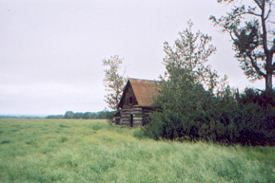The Prairie: A State of Mind
by Henry Kreisel

Soon after I first arrived in Alberta, now over twenty years ago, there appeared in the Edmonton Journal a letter in which the writer, replying to some articles which appeared sometime earlier, asserted with passionate conviction that the earth was flat. Now in itself that would have been quite unremarkable, the expression merely of some cranky and eccentric old man. Normally, then, one would not have been likely to pay very much attention to such a letter, and one would have passed it over with an amused smile. Nothing pleases us more than to be able to feel superior to pre-scientific man, secure behind the fortress of our own knowledge. I am no different in this respect from most other people. But there was something in the tone of that letter that would not allow me that kind of response. Far from feeling superior, I felt awed. Even as I write these lines, the emotion evoked in me by that letter that appeared in a newspaper more than twenty years ago comes back to me, tangible and palpable.
The tone of the letter was imperious. Surveying his vast domains, a giant with feet firmly rooted in the earth, a lord of the land asserted what his eyes saw, what his heart felt, and what his mind perceived…. I do know that in my travels round the prairies in those early years of my life in the Canadian west I looked at the great landscape through the eyes of that unknown man….
Years later I finally came to terms with that vision in a story that I called "The Broken Globe." This story deals with the clash between a father and his young son. The son, who is eventually to become a scientist, comes home from school one day to tell his father that the earth moves….
You will have noticed that the images I used to describe my imagined man seem extravagant–"a lord of the land," "a giant." These were in fact the images which came to me and I should myself have regarded them as purely subjective, if I had not afterwards in my reading encountered similar images in the work of other writers who write about the appearances of men on the prairie at certain times. Thus in Matha Ostenso’s Wilde Geese a young school teacher sees "against the strange pearly distance… the giant figure of a man beside his horse,".... On the very first page of Settlers of the Marsh, Philip Grove describing two men "fighting their way through the gathering dusk," calls one of them, Lars Nelson, "a giant, of three year’s standing in the country"....
I set the image of the giant in the landscape over against the more familiar one of man pitted against a vast and frequently hostile natural environment that tends to dwarf him, at the mercy of what Grove calls in Settlers of the Marsh, "a dumb shifting of forces" (152). Man, the giant-conqueror, and man, the insignificant dwarf always threathened by defeat, form the two polarities of the state of mind produced by the sheer physical fact of the prairie.
There are moments when the two images coalesce. So that observant Mrs. Bentley, whose diary forms the substance of Sinclair Ross’s novel As for Me and My House, records the response of a prairie congregation during the bleak and drought haunted 1930s.... W.O. Mitchell, in the opening sentences of Who Has Seen the Wind, speaks of the "least common denominator of nature, the skeleton requirements simply, of land and sky"(3).
Updated February 12 2015 by Student & Academic Services